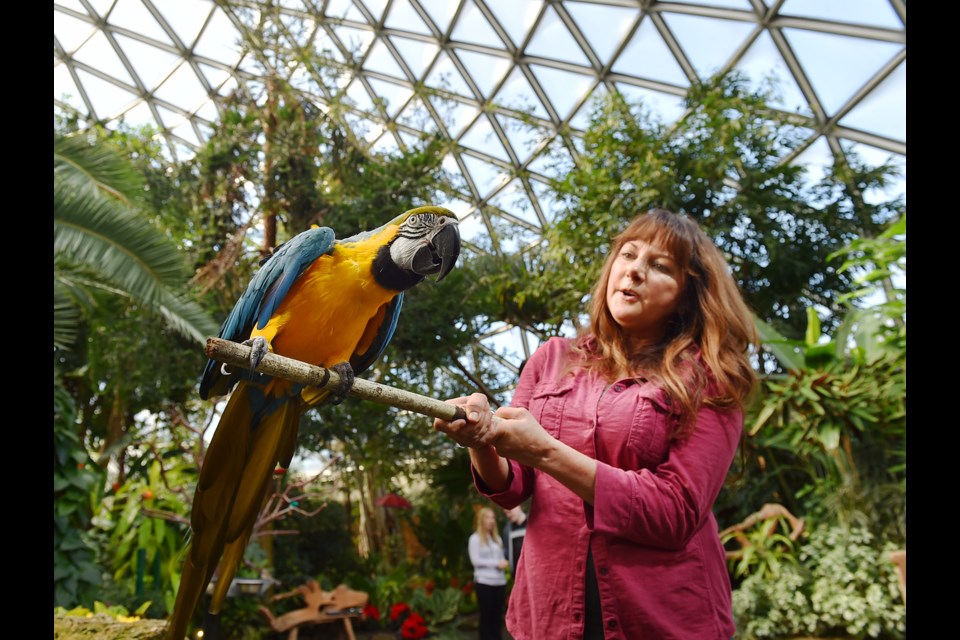It’s time for the morning feeding at Bloedel Conservatory at Queen Elizabeth Park. A cacophony of bird sounds echoes throughout the building, and a colourful array of feathered friends flock to the feeding area as manager Agnes Romses brings out the morning feast.
There are plates filled with chopped berries, grapes and bananas, peas and corn, greens and grains, and a pile of tiny beetle larvae that is cultivated at Bloedel specifically for the birds.
“Sometimes I make a joke that the birds are eating better than us,” Romses says.
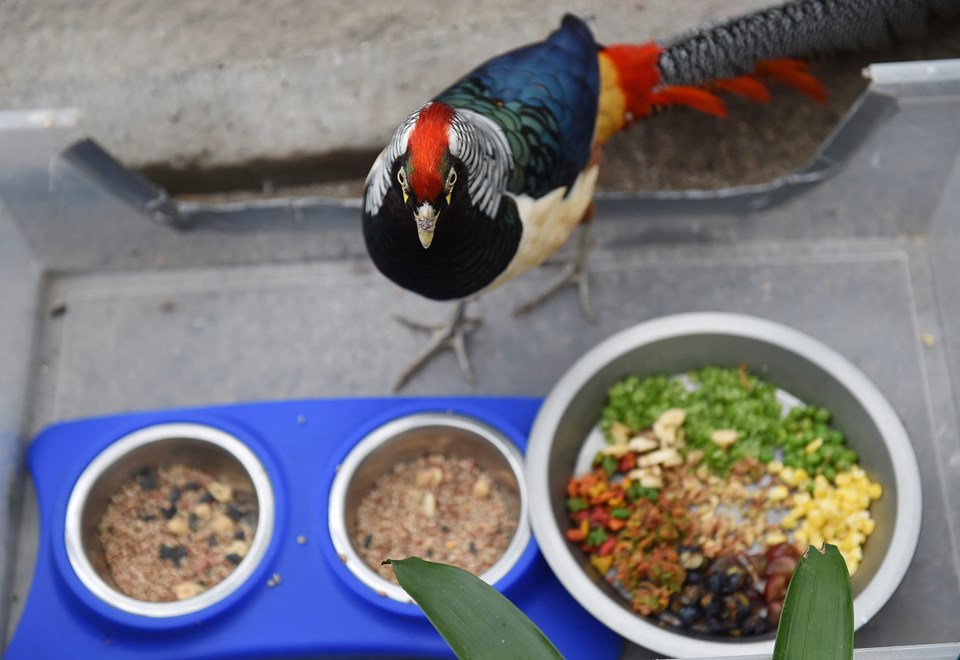
There are about 150 free-flying birds that live under the dome and another 11 larger birds — parrots, macaws and cockatoos — perched throughout the conservatory. Some are as old as the iconic building, which overlooks the city from Little Mountain and celebrates its 50th anniversary this year.
Watching Romses play, interact and even cuddle with some of the resident birds, you’d never know that she once had a deep fear of those same birds.
Romses started her career with the park board in the early 1990s. When the opportunity to move into management at Bloedel came up, she was initially resistant to the idea. She had done a six-month stint at the conservatory years before and was bitten by a macaw — it almost broke her finger. After taking the job, she was initially nervous around the birds until one reached out.
“I was working around his perch,” she says, pointing to Nelson, a bright green dwarf macaw. “And he jumped on my shoulder and I said, ‘OK, he’s not biting me’… And he said, ‘I love you, baby’ very clearly.”
Now Romses, who is still several years away from retirement, can’t imagine working anywhere else.
“It’s so rewarding that, to me, I even ask myself, ‘How am I going to be able to retire?’ I’ll be missing such a big piece of my life.”
Early days
Located in Queen Elizabeth Park atop Little Mountain, the futuristic domed conservatory sits at the geographic centre, and highest point, of the city. The dome houses three simulated climates — tropical rain forest, sub-tropical forest and desert — for the more than 150 exotic birds and hundreds of species of plants.
Once a quarry that provided the rocks used to build many of the city’s first streets, the land was handed over to the park board in 1939 to be turned into a park. Trees were planted on the northern slope starting in 1949 and the sunken gardens, planted in the former quarries, were unveiled in the early 1960s.
Park board commissioner John Coupar has a special connection to Bloedel. His father, Charles Coupar, served as the conservatory’s first director and, as a child, John attended the official opening with his parents. Flipping through binders filled with historical reports, articles and memorabilia, Coupar is an authority on Bloedel’s colourful history.
By the mid-’60s, plans for the conservatory started to take shape. Stuart Lefeaux, who was superintendent of the park board at the time, and deputy superintendent Bill Livingstone had a vision of creating something that would enhance Vancouver’s image — a home for tropical plants and birds that would be both educational and an attraction.
Original plans included the conservatory and plaza, as well as a “Museum of the Woods” and a planetarium. While some of those plans didn’t exactly come to fruition — the planetarium ended up at Vanier Park and there is no Museum of the Woods — it was full steam ahead on the conservatory.
There was, however, the matter of paying for the project. Livingstone had developed a friendship with Prentice Bloedel, a leader in the timber industry at the time. As the story goes, Livingstone was visiting Bloedel at his home on Bainbridge Island in Washington state. The two men were having lunch one day when Livingstone mentioned the vision for the conservatory.
“And the story that I heard was that he [Bloedel] said ‘Well, how much do you think it will be?’ and [Livingstone] said, ‘I think, it would be a little over a million dollars’ and Prentice Bloedel said to him ‘Well, I can handle that,’” says Coupar.
That $1.4-million donation would be the equivalent of more than $10.5 million today.
Designing a dome
The original drawings for the conservatory show a more traditional building design. However, Lefeaux was in Montreal for Expo ’67 and was inspired by the design of the U.S. pavilion — a large geodesic dome designed by renowned American architect-inventor Buckminster Fuller.
Local architecture firm Underwood, McKinley, Cameron, Wilson and Smith led the design of the conservatory, which was the first large triodetic dome conservatory in Canada and remains the largest single-structure conservatory in the country.
It is 140 feet in diameter, 70 feet high and covers 16,386 square feet of display area. The dome is made up of 2,324 pieces of five-inch extruded aluminum tubing and 1,490 Plexiglas bubbles of 32 different sizes.
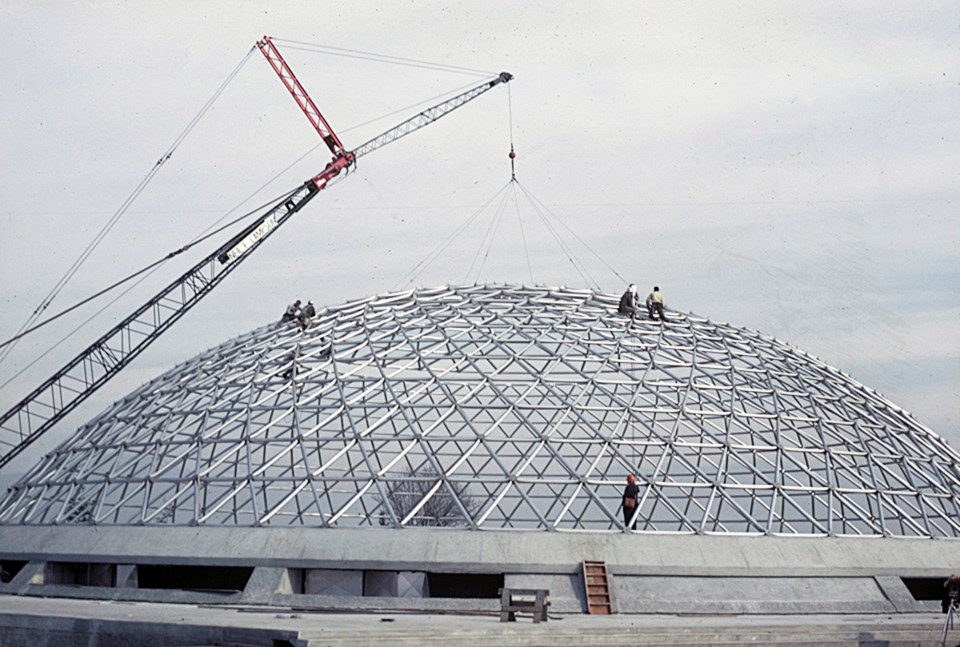
The design of the dome eliminates the need for support columns, leaving the interior views open and unimpeded.
It took just 10 days to erect the aluminum frame, but construction of the entire building and plaza took 18 months to complete.
Opening day
Bloedel Conservatory opened on Dec. 6, 1969 with an official ceremony that included speeches from then mayor Tom Campbell and Prentice Bloedel.
The park board chair at the time, Andy Livingstone, served as MC and Bloedel’s wife Virginia unveiled a sculpture that the couple gifted to the city — Henry Moore’s Knife-Edge, Two Piece still stands in the plaza outside the conservatory.
The sculpture was cast in bronze four times before the mould was destroyed with the other versions residing in the House of Lords in London, the Rockefeller estate in New York and on Henry Moore’s estate in the English countryside.
In the beginning, the Bloedel proved a popular attraction. In its first year open, half a million people went through the doors. That would change, however.
Saving the conservatory
Several decades later, facing an almost $3-million cut to its budget, Vancouver Park Board commissioners voted to close the conservatory. A staff report from November 2009 cited reduced attendance and increased maintenance costs resulting in the conservatory being subsidized by the park board to the tune of about $250,000 annually, as well as the need for “significant capital funds” to upgrade the aging building.
When Coupar heard news of the impending closure, he was in disbelief. Disbelief turned into action.
“All of a sudden I became the face of it and we formed this group… we called it Friends of the Bloedel.”
The small group set its sights on saving the conservatory — they created a brochure to help promote Bloedel, talked to the media, people raised money and, behind the scenes, started working on a proposal that would see Vancouver Botanical Garden Association, which runs VanDusen Botanical Garden, take over the conservatory.
The planned closure was supposed to take place following the 2010 Winter Games. However, the closure was postponed and, in July, the park board agreed to turn operations over to the association in partnership with Friends of the Bloedel.
The group was ultimately recognized for its efforts. In 2013, Friends of the Bloedel received a Heritage Commission Award of Honour from the City of Vancouver, “for their advocacy and successful efforts to save and revitalize the Bloedel Conservatory at Queen Elizabeth Park.”’
And for Coupar, he says the experience inspired him to run for park board commissioner. He was first elected in 2011 and is now serving his third term on the board.
“I would have never gotten into politics… I was interested in political science in college and I always followed politics… that’s really what propelled me to do it.”
Roof refresh
With the conservatory saved, it was time to tackle the roof. At more than 40 years old at the time, the roof was starting to show its age. Many of the bubbles had started to crack and leak.
The 2014 roof replacement project, which cost $2.4 million, almost twice as much as the original construction, took more than seven months to complete and required some particular precautions. Special scaffolding that would cover but not touch the dome was erected and then wrapped in a protective covering. Netting was installed inside the dome to catch any falling debris, as well as keep the resident birds in and outside birds out.
Flora and Fauna
While Bloedel has a plethora of exotic plants — including rare Mexican Horncones, a coffee tree, large Candelabra Cactus and, of course, the minor celebrity corpse flower, dubbed Uncle Fester, which bloomed for the first time this past summer and drew record crowds — the birds are by far the biggest draw for the conservatory.
“Some people come back so often that they know all the birds and they have their favourites,” Romses says.
At 57 years old, Casey, a yellow-crowned parrot, is the oldest bird in the conservatory and its longest standing resident.
“I think Casey has been here pretty much since the beginning,” Romses says, stepping into the bird’s area and trying to coax her off her perch. Monty, a princess parrot and Casey’s boyfriend, stands guard nearby.
“We got a female princess parrot hoping that Monty would have a friend because he said he wanted a friend but, no, that’s his real first love,” Romses says pointing to Casey.
Known as the conservatory’s showman, Kramer, a moluccan cockatoo, is one of the most intelligent, and chatty, of all the birds. He knows more than 40 words and phrases, can string together five or six words in a row and, Romses says, knows the concept of cause and effect.
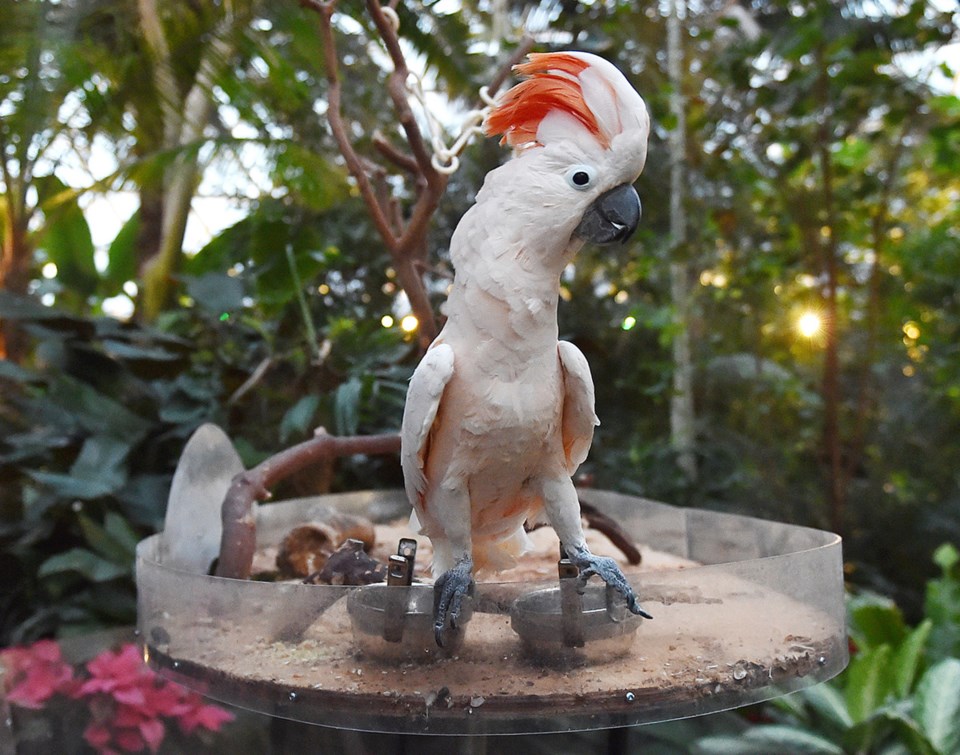
He has also proved to be a bit of a challenge for Romses. When birds such as Kramer get bored, they can act out in a bid for more attention. A couple of years ago, she says, Kramer got down from his perch and made his way into the gift shop area near the entrance.
“He had managed to climb the glass shelves… he never broke anything but chewed through everything he could get,” Romses recalls. “And when I found him there he kept saying, ‘Kramer is a good bird. Yup, yup. I am a good bird. I am a good bird.’”
Bright future
Possible changes are afoot at the conservatory, says Coupar.
“One of the exciting things that is happening is the [VBGA] has passed a resolution to help support [funding] a visitors centre at the front of Bloedel,” he says, adding that the group is proposing a temporary visitors centre where they could have a small education classroom.
“The idea is to tie the tropical rainforest with the temperate rainforest and how important the rainforest is,” he says.
There are also plans to bring Uncle Fester back. In July 2018, Bloedel superintendent Bruce McDonald told the Courier he would like to display the now-famous corpse flower, which attracted 17,000 visitors to the conservatory in just over a week, while it’s in its leaf phase. It’s expected to bloom again in the next five to 10 years.
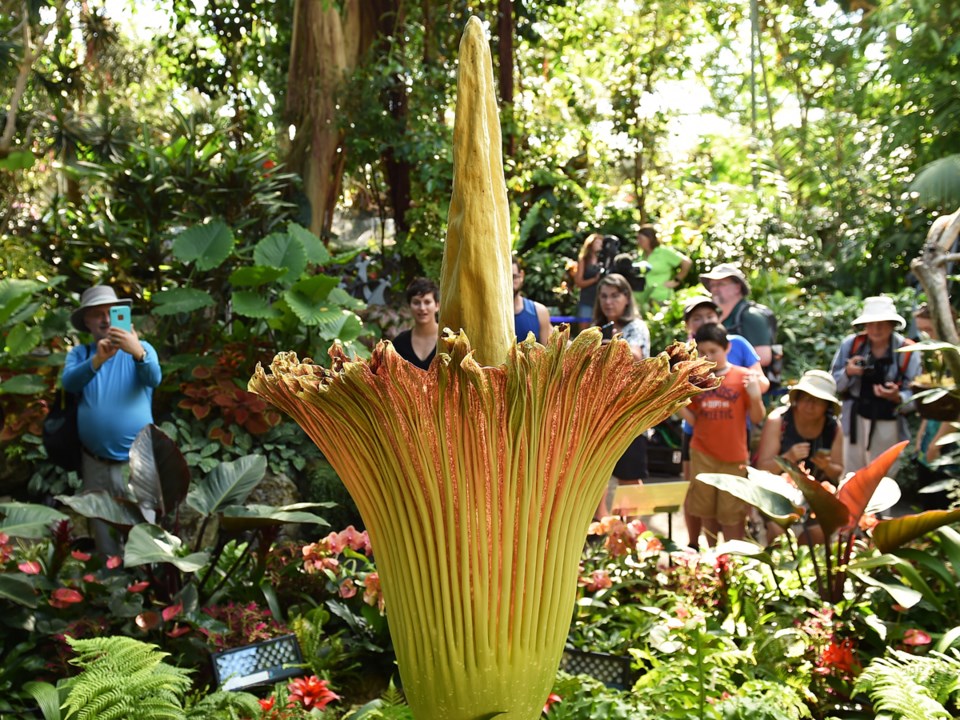
Looking back, what sticks out most for Coupar, who saw the construction and opening of Bloedel as a young Vancouverite, was how it changed the feeling of the city.
“It certainly kind of made my life bigger than it was before… I remember going up there at night and [thinking] almost anything is possible in Vancouver.”
@JessicaEKerr
